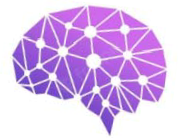
qEEG screening
Service code s9014
Short description
Schizophrenia is a psychiatric condition that describes a mental illness characterized by impairments in the perception or expression of reality, most commonly manifesting as auditory hallucinations, paranoid or bizarre delusions or disorganized speech and thinking in the context of significant social or occupational dysfunction.
Since these symptoms may overlap with many other conditions, qEEG screening may help to objectively assess the brain’s electrical activity typical for schizophrenia or psychosis.
Scientific research(1) demonstrated that qEEG differentiated schizophrenics from the non-clinical comparison group with an accuracy of 77%.
Results
By performing this qEEG screening you will get the information on:
- whether you have a qEEG pattern typical for schizophrenia and
- what is a risk of having schizotypical personality.
Notes:
- The results of qEEG analysis are put in context of published scientific studies, the individual’s health history, complaints, symptoms and psychometric and other evaluations (if available).
- Present psychotropic medication use may affect the results.
To place a service order, use the following email:
References
- Abrahams R, Taylor MA. Differential EEG patterns in affective disorder and schizophrenia. Arch Gen Psychiatry 1979; 36: 1355–1358.
- Winterer G, Ziller M, Dorn H, Frick K, Mulert C, Wuebben Y, Herrmann WM. Frontal dysfunction in schizophrenia – a new electrophysiological classifier for research and clinical applications. Journal European Archives of Psychiatry and Clinical Neuroscience. 2000; 250(4): 207-214.